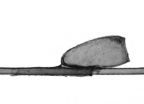(Press-News.org) One of the first, largest, and longest-running multipayer trials of patient-centered medical home medical practices in the United States was associated with limited improvements in quality and was not associated with reductions in use of hospital, emergency department, or ambulatory care services or total costs of care over 3 years, according to a study in the February 26 issue of JAMA.
The patient-centered medical home is a team-based model of primary care practice intended to improve the quality, efficiency, and patient experience of care. Professional associations, payers, policy makers, and other stakeholders have advocated for the patient-centered medical home model. In general, medical home initiatives have encouraged primary care practices to invest in patient registries, enhanced access options, and other structural changes that might improve patient care in exchange for enhanced payments, according to background information in the article. Dozens of privately and publicly financed trials of the medical home model are under way. "Interventions to transform primary care practices into medical homes are increasingly common, but their effectiveness in improving quality and containing costs is unclear," the authors write.
Mark W. Friedberg, M.D., M.P.P., of the RAND Corporation, Boston, and colleagues measured associations between participation in the Southeastern Pennsylvania Chronic Care Initiative, a multipayer medical home program, and changes in the quality, utilization, and costs of care. Pilot practices could earn bonus payments for achieving patient-centered medical home recognition by the National Committee for Quality Assurance (NCQA). Thirty-two volunteering primary care practices participated in the pilot (conducted from June 2008 to May 2011). Using claims data from 4 participating health plans, the researchers compared changes in care (in each year, relative to before the intervention) for 64,243 patients who were attributed to pilot practices and 55,959 patients attributed to 29 comparison practices. Measured outcomes included performance on 11 quality measures for diabetes, asthma, and preventive care; utilization of hospital, emergency department, and ambulatory care; standardized costs of care.
Pilot practices successfully achieved NCQA recognition and reported structural transformation on a range of capabilities, such as use of registries to identify patients overdue for chronic disease services (increased from 30 percent to 85 percent of pilot practices) and electronic medication prescribing (increased from 38 percent to 86 percent). Pilot practices accumulated average bonuses of $92,000 per primary care physician during the 3-year intervention.
Of the 11 quality measures evaluated, pilot participation was significantly associated with greater performance improvement, relative to comparison practices, on only l measure: monitoring for kidney disease in diabetes. There were no other statistically significant differences in measures of utilization, costs of care, or rates of multiple same-year hospitalizations or emergency department visits.
The authors conclude that "a multipayer medical home pilot, in which participating practices adopted new structural capabilities and received NCQA certification, was associated with limited improvements in quality and was not associated with reductions in utilization of hospital, emergency department, or ambulatory care services or total costs over 3 years."
"Despite widespread enthusiasm for the medical home concept, few peer-reviewed publications have found that transforming primary care practices into medical homes produces measurable improvements in the quality and efficiency of care."
The authors add that their "findings suggest that medical home interventions may need further refinement."
(doi:10.1001/jama.2014.353; Available pre-embargo to the media at http://media.jamanetwork.com)
Editor's Note: This study was sponsored by the Commonwealth Fund and Aetna. Please see the article for additional information, including other authors, author contributions and affiliations, financial disclosures, etc.
There will also be a digital news release available for this study, including the JAMA Report video, embedded and downloadable video, audio files, text, documents, and related links. This content will be available at 3 p.m. CT Tuesday, February 25 at this link.
Editorial: The Patient-Centered Medical Home - One Size Does Not Fit All
"Before confidently promoting the patient-centered medical home (PCMH) as a core component of health care reform, it is necessary to better understand which features and combination of features of the PCMH are most effective for which populations and in what settings," writes Thomas L. Schwenk, M.D., of the University of Nevada School of Medicine, Reno, in an accompanying editorial.
"The identification of specific PCMH features for various risk strata will likely have significant influence on the work patterns of physicians, who may be responsible for a larger panel of patients than currently but for whom only routine care is needed, often by other members of the health care team. The physician's time and expertise will be best focused on a relatively small number of the most complex and expensive patients."
(doi:10.1001/jama.2014.352; Available pre-embargo to the media at http://media.jamanetwork.com)
Editor's Note: The author has completed and submitted the ICMJE Form for Disclosure of Potential Conflicts of Interest and none were reported.
There will also be a digital news release available for this study, including the JAMA Report video, embedded and downloadable video, audio files, text, documents, and related links. This content will be available at 3 p.m. CT Tuesday, February 25 at this link.
INFORMATION:
Patient-centered medical home program results in little improvement in quality
2014-02-25
ELSE PRESS RELEASES FROM THIS DATE:
Blood transfusion for PCI associated with increased risk of cardiac event
2014-02-25
In an analysis that included more than two million patients who underwent a percutaneous coronary intervention (PCI; procedures such as balloon angioplasty or stent placement used to open narrowed coronary arteries), there was considerable variation in red blood cell transfusion practices among hospitals across the U.S., and receiving a transfusion was associated with an increased risk of in-hospital heart attack, stroke or death, according to a study in the February 26 issue of JAMA.
Red blood cell transfusion among patients with coronary artery disease is controversial. ...
Continuous handling of receipts linked to higher urine BPA levels
2014-02-25
Study participants who handled receipts printed on thermal paper continuously for 2 hours without gloves had an increase in urine bisphenol A (BPA) concentrations compared to when they wore gloves, according to a study in the February 26 issue of JAMA.
Human exposure to bisphenol A (BPA) has been associated with adverse health outcomes, including reproductive function in adults and neurodevelopment in children exposed shortly before or after birth. "Exposure to BPA is primarily through dietary ingestion, including consumption of canned foods. A less-studied source of ...
Medical homes make small improvement in quality, do not cut costs, study finds
2014-02-25
A three-year pilot of a "medical home" model of primary care yielded few improvements in the quality of care and no reductions in hospitalizations, emergency department visits or total costs of care, according to a new RAND Corporation study.
Evaluating one of the nation's earliest and largest multipayer medical home pilots, researchers found that most participating primary care practices achieved recognition as medical homes, but the quality of care improved significantly for only one of 11 widely-used quality measures.
The findings are published in the Feb. 26 edition ...
Brain cell activity regulates Alzheimer’s protein
2014-02-25
Increased brain cell activity boosts brain fluid levels of a protein linked to Alzheimer's disease, according to new research from scientists at Washington University School of Medicine in St. Louis.
Tau protein is the main component of neurofibrillary tangles, one of the hallmarks of Alzheimer's disease. It has been linked to other neurodegenerative disorders, including frontotemporal dementia, supranuclear palsy and corticobasal degeneration.
"Healthy brain cells normally release tau into the cerebrospinal fluid and the interstitial fluid that surrounds them, but ...
'How well did you sequence that genome?' NIST, consortium partners have answer
2014-02-25
In December 2013, the U.S. Food and Drug Administration approved the first high-throughput DNA sequencer (also known commonly as a "gene sequencer"), an instrument that allows laboratories to quickly and efficiently sequence a person's DNA for genetic testing, medical diagnoses and perhaps one day, customized drug therapies. Helping get the new device approved was another first: the initial use of a reference set of standard genotypes, or "coded blueprints" of a person's genetic traits. The standard genotypes were created by the National Institute of Standards and Technology ...
Talking in 3-D: Discussing and administrating complex construction models via a web browser
2014-02-25
Redevelopment of the London King's Cross station and the nearby neighborhood was announced in 2005 and completed with a grand opening in 2012. The internationally well-recognized engineering services firm Arup, famous among other things for their work on the Opera House in Sydney, Australia, and the Allianz Arena in Munich, worked on this 400 million pound construction project. In the process, the area to the north of the station including 50 new buildings, 2,000 new apartments, 20 new streets and ten new public squares was being renewed. Thus, a great challenge was to ...
Air Force aircraft returned from Vietnam is postwar source of Agent Orange contamination
2014-02-25
February 25, 2014 -- From 1971-1982, Air Force reservists, who flew in 34 dioxin-contaminated aircraft used to spray Agent Orange and returned to the U.S. following discontinuation of the herbicide spraying operations in the Vietnam War, were exposed to greater levels of dioxin than previously acknowledged, according to a study published today in Environmental Research by senior author Jeanne Mager Stellman, PhD, professor emerita at the Mailman School of Public Health's Department of Health Policy and Management.
"These findings are important because they describe ...
New clues found to preventing lung transplant rejection
2014-02-25
Organ transplant patients routinely receive drugs that stop their immune systems from attacking newly implanted hearts, livers, kidneys or lungs, which the body sees as foreign.
But new research at Washington University School of Medicine in St. Louis suggests that broadly dampening the immune response, long considered crucial to transplant success, may encourage lung transplant rejection.
In a surprising discovery, the researchers found that newly transplanted lungs in mice were more likely to be rejected if key immune cells were missing, a situation that simulates ...
Ordinary conditioner removes head lice eggs as effectively as special products
2014-02-25
Eggs from head lice, also called nits, are incredibly difficult to remove. Female lice lay eggs directly onto strands of hair, and they cement them in place with a glue-like substance, making them hard to get rid of. In fact, the eggs are glued down so strongly that they will stay in place even after hair has been treated with pediculicides -- substances used to kill lice.
Some shampoos and conditioners that contain chemicals or special oils are marketed as nit-removal products. However, new research just published in the Journal of Medical Entomology shows that ordinary ...
Research links risky behaviors of gambling and sex
2014-02-25
February 25, 2014 -- Late adolescence is a period when many youth become involved in high-risk behaviors with adverse consequences. Researchers at the Mailman School of Public Health with colleagues at Johns Hopkins University studied the degree to which two such behaviors, adolescent sexual behaviors and gambling, affected African American youth in nine primary schools in Baltimore, MD. In data collected from a cohort study, they assessed whether certain adolescent sexual behaviors linked with unintended consequences such as adolescent pregnancy and sexually transmitted ...



